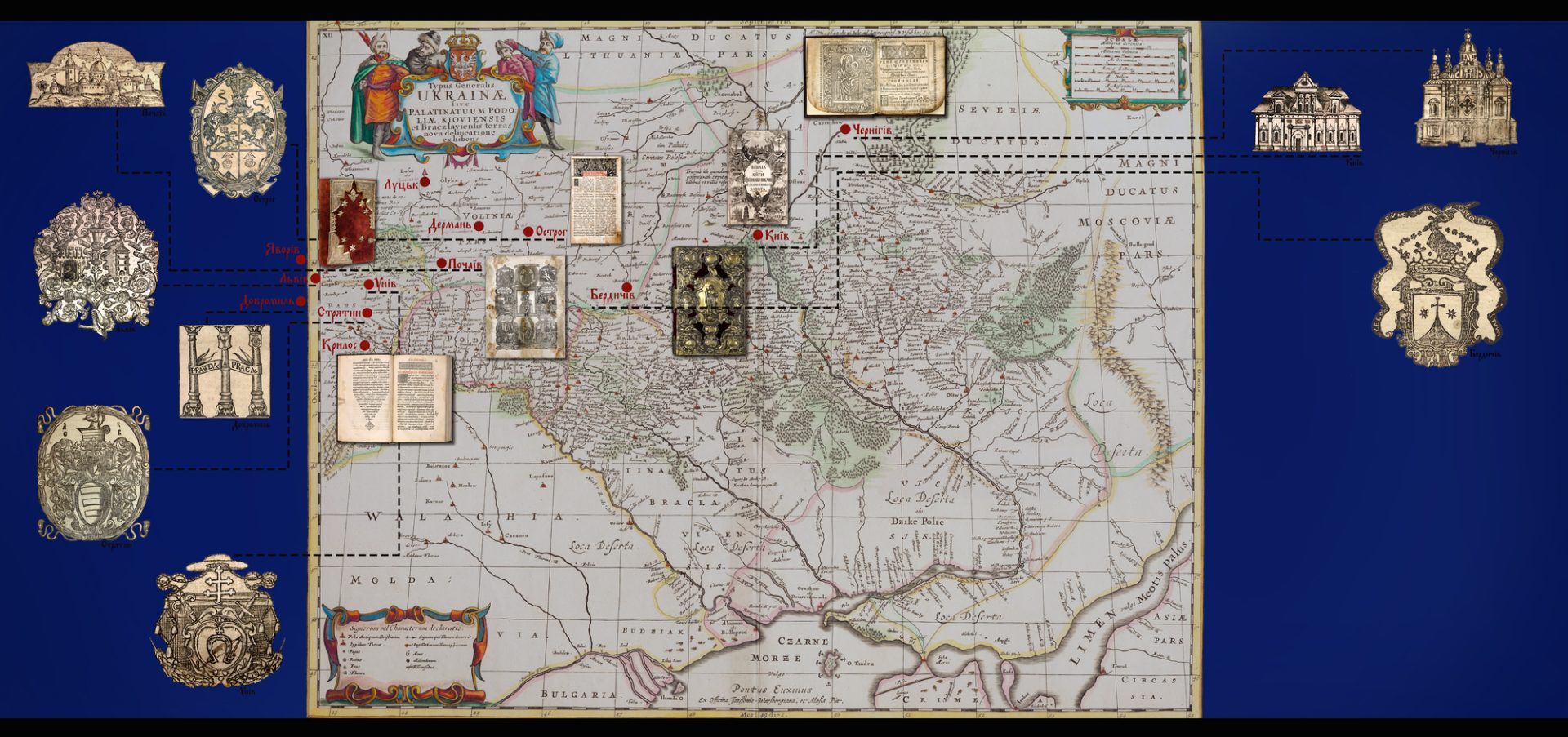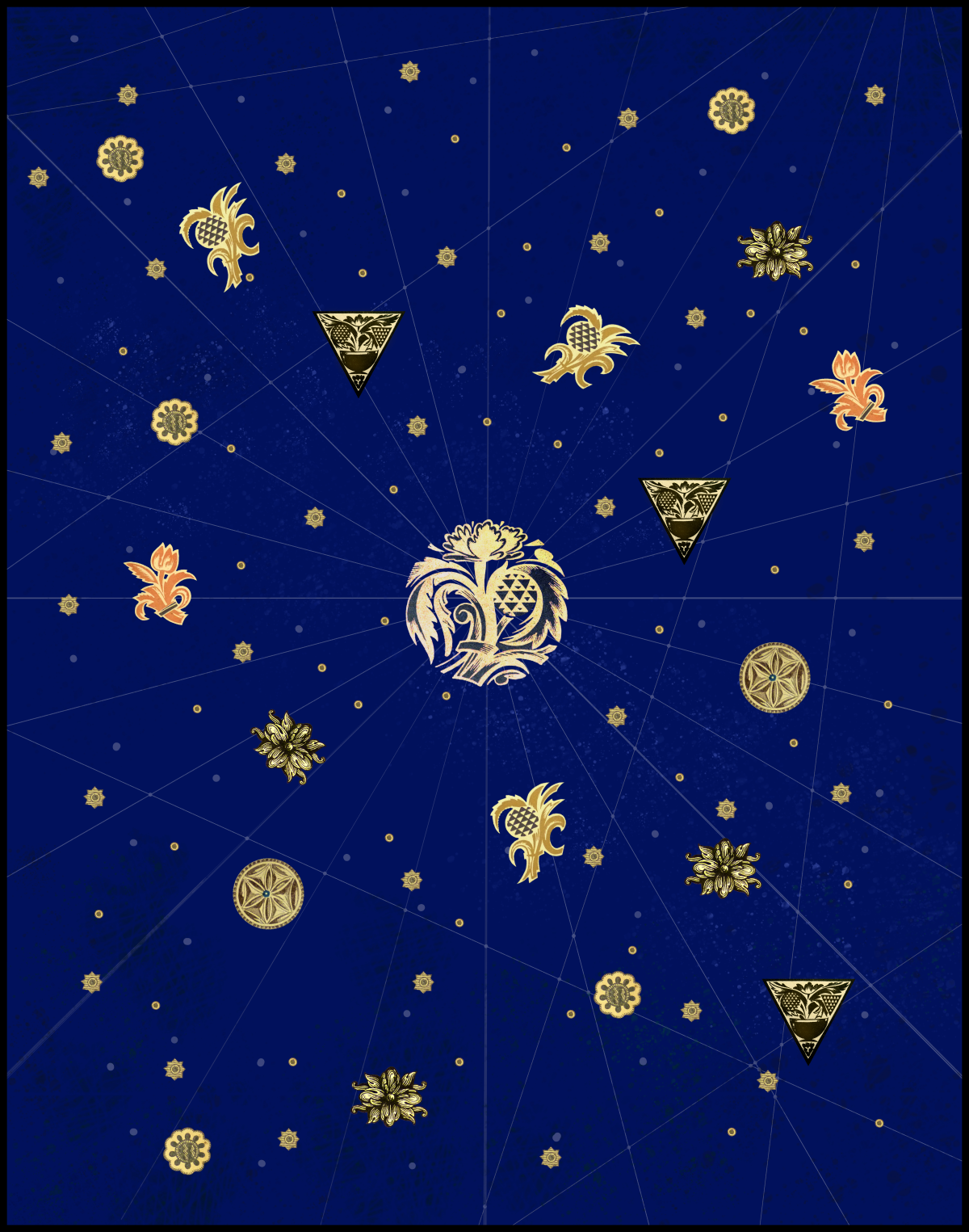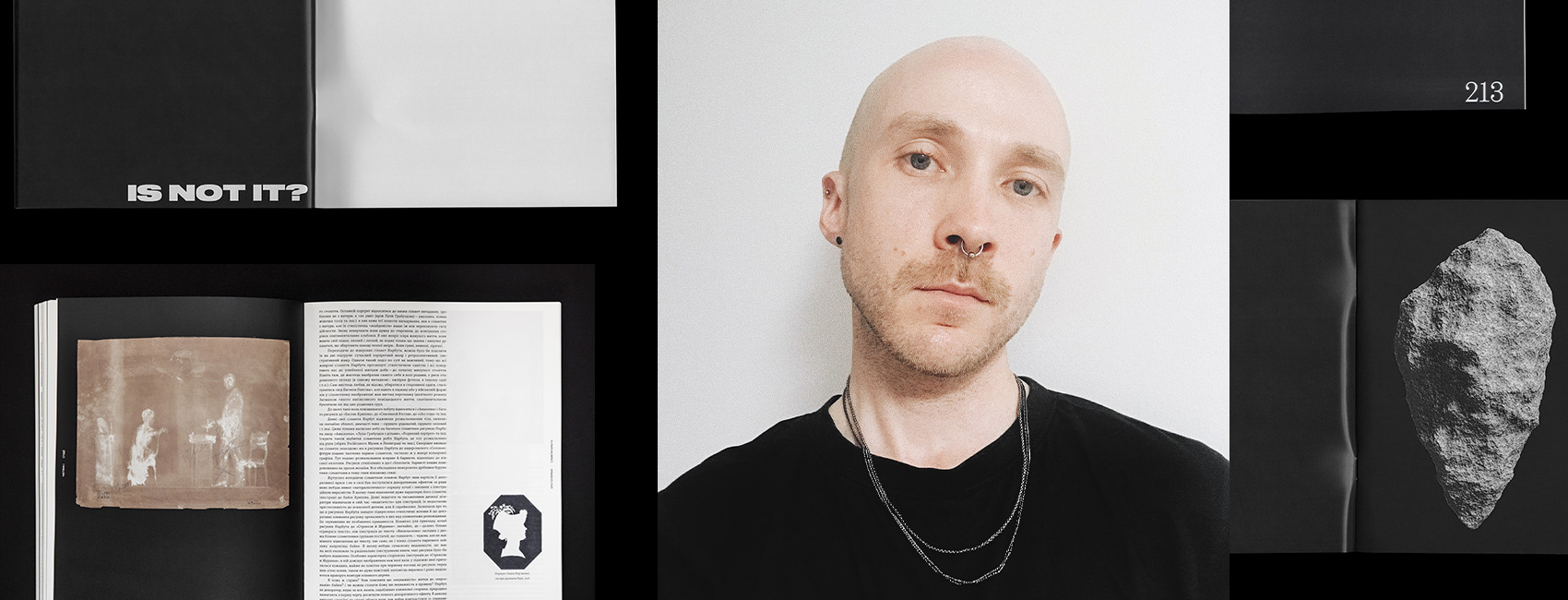* ESC - закрити вікно пошуку
Chytomo Spotlights
Exploring Ukraine’s bookmaking heritage: a virtual journey through the Museum of Book and Printing
04.10.2023
The Museum of Books and Printing of Ukraine is a must-see destination to step into the birthplace of printed books in Kyiv, housed within the former Lavra printing house. The museum’s exhibits and interactive programs help you to immerse yourself in the history and art of book creation, spanning from manuscripts to the present day. Here, materials, tools, equipment, and technologies become more accessible, comprehensible, and engaging . Beyond its academic and exhibition projects , the museum engages in various contemporary projects, including the “Virtual Portal of the Museum of Books and Printing of Ukraine.” This article primarily focuses on the artistic aspect of this particular project.
The name
The “Virtual Portal of the Museum of Book and Printing of Ukraine” is a project launched by the Museum in 2023 with the support of the UCF. Its name is inspired by the ornate Roman arches or portals that adorn the title pages of ancient prints. . Moreover, the project focuses on digitizing an extensive amount of rare artifacts: four manuscript books, 120 ancient prints, and 1000 graphic pieces within 3.5 months. As a result, the percentage of digitalized manuscripts, old prints and graphic works collections will increase from 8% and 4.5% respectively to 26.6% and 12.6% respectively.
The portal metaphorically acts as a gateway, r, offering online and electronic media access to full-text digital copies of books and double-sided digital reproductions of graphic works.
Project Team and Components
The project team comprises 15 museum professionals, including esteemed cultural figures and scholars. Notably, recipient of the Shevchenko Prize Taras Kompanichenko, Doctor of Historical Sciences Svitlana Kahamlyk, and old print scholars and museum curators Valentyna Bochkovska, Liudmyla Khaukha, and Dmytro Palii, as well as artist Olena Polishchuk and museum collections manager Viktoria Belyba.
RELATED: Ukraine! Unmuted: Key Insights from the III Congress of Culture in Lviv
In collaboration with Skyron and Archival Information Systems, the project involves photographing graphics, digitizing books using planetary scanners, and using a combination of laser scanning and photogrammetry for architectural documentation.

The project’s primary aim is to showcase the museum’s extensive and diverse collection. However, due to its substantial volume, displaying everything simultaneously becomes impractical. Thus, the project concentrates on specific areas to stimulate research, spark interest in the subject matter, and ultimately encourage physical visits to the museum.
Moreover, each of the project’s outputs acts as a distinct “portal”:
3D Model of the Museum: The museum is situated within the historic Kyiv-Pechersk Lavra printing house, over 300 years old and safeguarded by UNESCO. The 3D model enables users to virtually navigate the premises, offering a journey through time and space to explore architectural intricacies.
“Online Collection” Section on the website: This addition to the museum’s website facilitates public access to full-text copies of rare Ukrainian and European old printed books, manuscripts, and original graphic works by renowned Ukrainian artists.
E-book by V. Bochkovska and L. Khaukha: The “Catalogue of Manuscripts and Old Prints of the Museum of Books and Printing of Ukraine” (hereinafter referred to as the Catalogue – ed.) serves as another facet of the “portal.” It offers scientific descriptions of museum artifacts digitized during the project. These descriptions document the diversity of the specimens, preserving them from theft, substitution, loss for scientific circulation, or misinterpretation. The Catalog will remain adaptable, allowing future supplementation, considering ongoing digitization efforts that encompass a fifth part of the museum’s old printed book collection. The interactive publication will include links to full-text copies of old printed books, curator-supported videos, and sound recordings of ancient texts, including performances by the renowned reconstructer of ancient music, Taras Kompanichenko.
The virtual exhibition “Museum Magic of Numbers,” as described by Olena Polishchuk, the project’s artist and Head of the Department of Scientific and Exhibition Work at the Museum of Book and Printing of Ukraine, the exhibition “aims to captivate viewers swiftly, appealing to newcomers while adding a theatrical aspect for longtime museum enthusiasts. It’s designed to inspire, offer unexpected insights, and introduce an element of a playful yet educational experience.”
Artistic Design
Various products require various artistic approaches. For instance, the design of the electronic Catalog is concise, prioritizing content—texts and exhibit photos (accompanied by links to full-text copies).
“However, the design, consistent with the portal’s theme, will be present,” assures Polishchuk.
In contrast, a more vivid and unexpected artistic solution emerges in the virtual exhibition “Museum Magic of Numbers.” Commemorating the 50th anniversary of the Museum of Books and Printing of Ukraine in 2022—a milestone that couldn’t properly be celebrated—,it features 50 curated exhibits. These exhibits aim to unveil captivating facets of book creation history and the formation of Ukrainian identity, emphasized in the exhibition’s poster.
While the designs of the electronic edition and the virtual exhibition differ, they share common threads: a thematic connection to the portal, an invitation to explore the realm of books and book studies, and the use of collage as a problem-solving technique.This choice of collage technique for the virtual exhibition created significant allure for visitors, in some ways making it resemble a quest to locate the exhibits. The exhibits are seamlessly woven into various elements of prints, with digital copies utilized to craft the walls within the virtual space.

What is the difference between the virtual exhibition and the museum’s existing 3D tour? The virtual exhibition constitutes an entirely digital, imagined space distinct from the physical museum layout. It serves as a supplemental, unique dimension to the existing museum display. Conversely, a 3D tour offers a remote, virtual visit to the museum, mimicking the experience of physically exploring the museum’s space.
In the realm of a virtual exhibition, the absence of physical constraints allows for more flexibility in merging curatorial intentions with artistic visions. This diverges from traditional exhibitions, constrained by the limitations of physical exhibition spaces. For instance, in a historical building, altering wall colors for specific exhibitions might be unfeasible. In contrast, within a virtual exhibition, such alterations are not only feasible but also encouraged, fostering an expansive scope for artistic creativity. The design of each “room” within the virtual exhibition “Museum Magic of Numbers” is conceived by the project’s artist, Olena Polishchuk. Skyron specialists handle the technical aspects, such as programming, placing 50 digitized exhibits within the virtual “rooms”, and establishing potential viewing angles.
How the design of the virtual exhibition was created
The curator of the virtual exhibition is the author and leader of the entire project, Valentyna Bochkovska, Director of the Museum, who holds a Ph.D. in History. She chooses the artifacts to feature in the exhibition and entrusts the task of designing its premises to the project’s artist.

Polishchuk, the project’s artist, explains her design approach: “When crafting an applied piece like an exhibition, it all commences with the curator’s idea. In this case, the curator outlined the necessity for five distinct “rooms”, each with its unique theme and corresponding design, differing from its adjacent spaces. Yet, there’s an element of cohesion to highlight their collective integrity.” Throughout discussions, the team collectively decided that collage techniques and a depiction of the starry sky would serve as common motifs—albeit unique in each room—always featured on the “ceiling.”
“Through the Thorns to the Stars” emphasizes the lofty aspirations shared by the creators and readers of books, the creators and visitors of both the museum and the exhibition. Notably, it is always a stylisation of old engravings from editions in our collection or fragments of their decoration. In alignment with the context of each “room’s” theme, the exhibition’s curator provides digital copies of prints, serving as my inspiration. I then choose which elements to incorporate, how to arrange the exhibition, and the placement of selected exhibits,” elaborates Polishchuk regarding her inspiration.
Exhibition artifacts
The virtual exhibition, “Museum Magic of Numbers,” encapsulates the essence of the vast collection, which comprises over 58,000 artifacts, by spotlighting 50 selected exhibits. To delineate the exhibition’s narrative, the team identified five themes, each represented by 10 artifacts. For instance, the first “room” illuminates the ancient history of the museum’s location. Nestor the Chronicler, a sculpture created by sculptor Fuzhenko for the museum in 1971, shares space with a handwritten Service Book from 1648 and rare editions published in the Kyiv Cave Monastery printing house across different eras. Notably featured are works like “John Chrysostom: Homilies on the Acts of the Apostles” (1624), “The Slovene – Russian Lexicon” by Pamvo Berynda (1627), “The Trebnyk” by Petro Mohyla (1646), “The Key of Understanding” by Ioanikii Haliatovskyi (1659), “The Paterik of the Kievan Caves Monastery” (1661), “The Spiritual Sword” by Lazar Baranovych (1666), and “The Gospel” in in decorations (1773).

Another “room” delves into the legacies of Ukraine’s oldest and most influential printing houses. The following “room” introduces valuable European old prints and Ukrainian editions of European authors, which are interconnected by content or artistic design. Notable examples include “Aristotle’s Philosophy,”published by the Lviv Stauropegic Brotherhood in 1745, alongside a Venetian edition of Aristotle’s work from 1560, emphasizing the cultural interconnectedness of Ukrainians during that era. An additional “room” honors the works of prominent Ukrainian graphic artists, while the final “room” explains the role of books in shaping Ukrainian national identity and statehood during the late ХІХ and early ХХ centuries.
RELATED: Yulia Vaganova became a laureate of the Laurentum Prize for saving cultural heritage
Chytomo spotlights: Ukrainian culture on and after frontline” project. The project is funded by the Stabilisation Fund for Culture and Education of the German Federal Foreign Office
and the Goethe-Institut. goethe.de.
This publication is sponsored by the Chytomo’s Patreon community
що більше читаєш – то ширші можливості

3625
Chytomo Spotlights
Amidst drone and missile attacks, Kharkiv publisher launches ‘Book Strongroom,’ a bomb shelter-bookstore, to preserve Ukrainian cultural heritage
15.12.2023 - Oleksandr Mymruk, Olesia Boiko
3667
Chytomo Spotlights
Kyiv Book Weekend: ‘Ukrainian book has gone beyond the “bubble” of well-known faces’
13.12.2023 - Mariia Horbach


